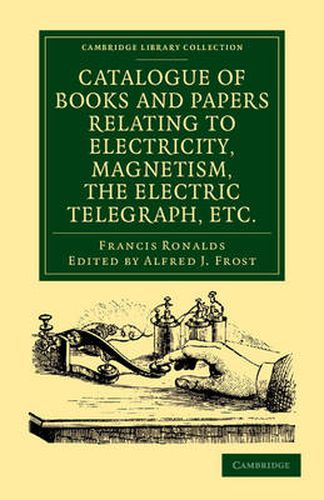Readings Newsletter
Become a Readings Member to make your shopping experience even easier.
Sign in or sign up for free!
You’re not far away from qualifying for FREE standard shipping within Australia
You’ve qualified for FREE standard shipping within Australia
The cart is loading…






In 1816, Sir Francis Ronalds (1788-1873) became the first physicist to demonstrate the possibility of an electric telegraph. Previously, the only telegraphs were semaphores - cumbersome signal towers capable of sending only two or three words per minute. However, his idea was dismissed by the Admiralty, where senior officials deemed any new telegraphs ‘unnecessary’. Although his designs were soon to be superseded by those of the more successful Samuel Morse, Ronalds’ devotion to telegraphy never waned; he spent much of his life collecting books on the subject. Upon his death, his collection was left to the Society of Telegraph Engineers, where it would become available to those most in need of it. Covering more than 13,000 titles, and including a short memoir of Ronalds, this book, first published in 1880, is a catalogue of that collection and other relevant works. It remains an invaluable resource for students in the history of science.
$9.00 standard shipping within Australia
FREE standard shipping within Australia for orders over $100.00
Express & International shipping calculated at checkout
In 1816, Sir Francis Ronalds (1788-1873) became the first physicist to demonstrate the possibility of an electric telegraph. Previously, the only telegraphs were semaphores - cumbersome signal towers capable of sending only two or three words per minute. However, his idea was dismissed by the Admiralty, where senior officials deemed any new telegraphs ‘unnecessary’. Although his designs were soon to be superseded by those of the more successful Samuel Morse, Ronalds’ devotion to telegraphy never waned; he spent much of his life collecting books on the subject. Upon his death, his collection was left to the Society of Telegraph Engineers, where it would become available to those most in need of it. Covering more than 13,000 titles, and including a short memoir of Ronalds, this book, first published in 1880, is a catalogue of that collection and other relevant works. It remains an invaluable resource for students in the history of science.